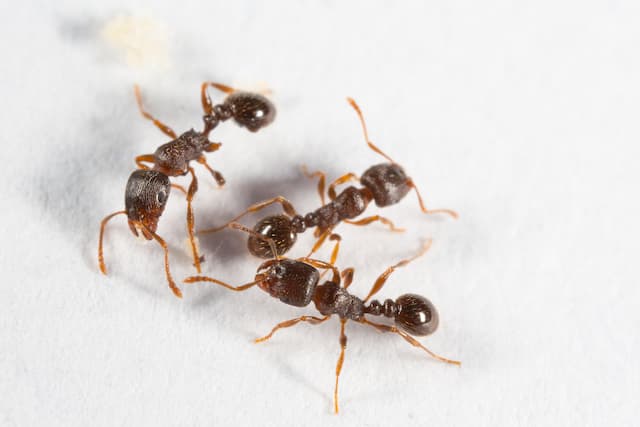
Pest problems are a common concern for homeowners and businesses alike. Finding effective and safe pest control solutions without harming the environment is crucial in today’s world. This article explores eco-friendly approaches to pest infestations, providing practical strategies for a sustainable and healthy living space. We will delve into the various facets of pest control using green solutions, from understanding pest behaviors to implementing effective prevention methods. The following sections will cover varied types of pest problems, outlining eco-friendly solutions, and offering examples of how these methods work in real-world scenarios. We’ll also offer a conclusion that summarizes the key takeaways, a frequently asked querys (FAQ) section, and a list of valuable resources.
Understanding Pest Problems
Common Household Pests and Their Behaviors
Many household pests thrive in specific environments. Understanding their habits and triggers is essential to preventing future infestations. For instance, rodents, attracted to food sources and shelter, are often a major issue. determineing their entry points and eliminating food sources are key to effective control. Similarly, insects like ants and cockroaches thrive in warm, moist areas with food availability. Taking preventive measures like sealing cracks, proper food storage, and regular cleaning can drastically reduce the risk of infestation.
The Impact of Conventional Pest Control
Conventional pest control methods often rely on harsh chemicals. While they may offer quick outcomes, the long-term environmental and health impacts are significant. These chemicals can harm beneficial insects, pollute water sources, and pose risks to human health. This article will explore alternative methods that address pest issues without compromising sustainability or safety.
Natural Pest Repellents and Barriers
Related Post : The Pressure to Be Perfect: Balancing Expectations in Eco-Friendly Repairs
Creating an Inhospitable Environment
Implementing physical barriers can prevent pest access to your property. Seal cracks and crevices in walls, foundations, and windows to deny pests entry. Regularly remove debris, clutter, and overgrown vegetation that could offer shelter. Maintaining a clean and organized environment is an crucial preventative measure. Proper sanitation helps reduce attraction points for pests.
The function of Essential Oils
Many essential oils possess natural pest-repelling properties. Citronella, peppermint, and tea tree oils are known for their efficacy in deterring insects. Consider using these oils in diffusers, sprays, or diluted in water for application around your home. Place strategically-positioned bowls of essential oil around areas susceptible to infestations. These methods offer a safe, non-toxic approach to managing pest populations.
Integrated Pest Management (IPM)
A Holistic Approach to Pest Control
Integrated Pest Management (IPM) is a sustainable approach that involves combining various methods to manage pest problems effectively. It emphasizes prevention, early intervention, and minimizing pesticide use. By combining several strategies, homeowners and businesses can develop a thorough IPM plan. This includes monitoring pest activity and determineing pest entry points. Using natural deterrents, traps, and barriers. And following up with a targeted approach if necessary.
Monitoring and Evaluation
Regular monitoring of pest activity is key. Tracking patterns and determineing areas of infestation allows for proactive intervention and preventing outbreaks. Assess efficacy of each plan and adjust your plan accordingly. Use this data to determine if your IPM plan is achievementful and needs adjustment.
Bio-Based Solutions
Using Beneficial Insects
Bio-based pest control strategies involve introducing beneficial insects or organisms that prey on the targeted pest species. Ladybugs, lacewings, and parasitic wasps are effective natural predators of many common garden pests. Introducing these natural enemies into the affected area can help maintain a balanced ecosystem and effectively control pest populations.
Employing Beneficial Nematodes
Nematodes are microscopic roundworms that can be used as bio-control agents. Specific nematodes are detrimental to certain insect larvae and soil-borne pests. Introducing nematodes into the soil can effectively manage these infestations. This method is particularly useful for indoor and outdoor spaces.
Green Cleaning Practices
Safe and Effective Cleaning Solutions
Regular cleaning routines are crucial for preventing pest infestations. Pests are attracted to crumbs, spills, and unclean spaces. Implementing thorough cleaning protocols in and around your home or business is an excellent preventive method. This includes regularly cleaning surfaces, storing food properly, and maintaining cleanliness in areas where pests may reside. Use eco-friendly cleaning products to avoid introducing new hazards into the equation.
Minimizing Food Sources
Keep food storage containers tightly sealed to prevent pests from gaining access to food sources. Store all organic materials in airtight containers. Disposing of garbage regularly and properly can also reduce attraction points. Promptly clean up spills and crumbs to remove any residual food particles that pests might be attracted to.
In conclusion, embracing eco-friendly pest control methods offers a sustainable and effective solution to pest problems. By prioritizing green solutions, we can protect our environment, improve public health, and ensure the long-term well-being of our communities. Adopting these practices not only minimizes harmful impacts but also paves the way for a more harmonious coexistence with nature. Learn more about safe, effective pest solutions by visiting our website today and discovering the path toward eco-friendly living.